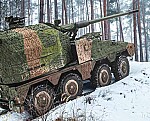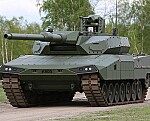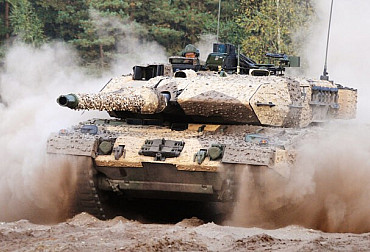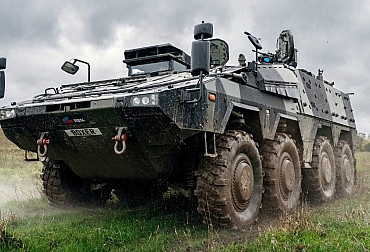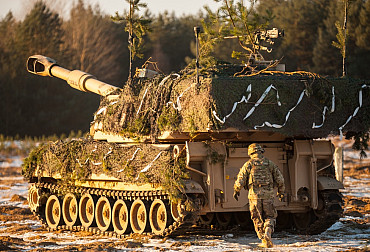Czech MADR 3D radars become a key component of NATINAMDS
The Czech Army has been using EL/M-2084 radars, known as MADR 3D, in full operation for at least six months. Seven units have been delivered to the Czech Republic since February 2022 (the last, eighth radar will be handed over to the Czech Army at the beginning of July this year). After successfully completing military tests in April 2023, the radars were gradually integrated into the arsenal, specifically at the 26th Command, Control and Reconnaissance Regiment.
The MADR 3D radars are deployed to provide an overview of the air situation at low and medium altitudes (100–3,000 metres) and are part of NATO's integrated air and missile defence system (NATINAMDS). Five radars are located at stationary military sites, while three are intended for the protection of strategic targets, training or as a backup within the National Air Defence Reinforcement System (NaPoSy PVO ČR). These radars were first deployed during the NATO Ramstein Guard exercise in 2024, where the system proved its effectiveness in detecting and tracking targets even under conditions of heavy electronic jamming.
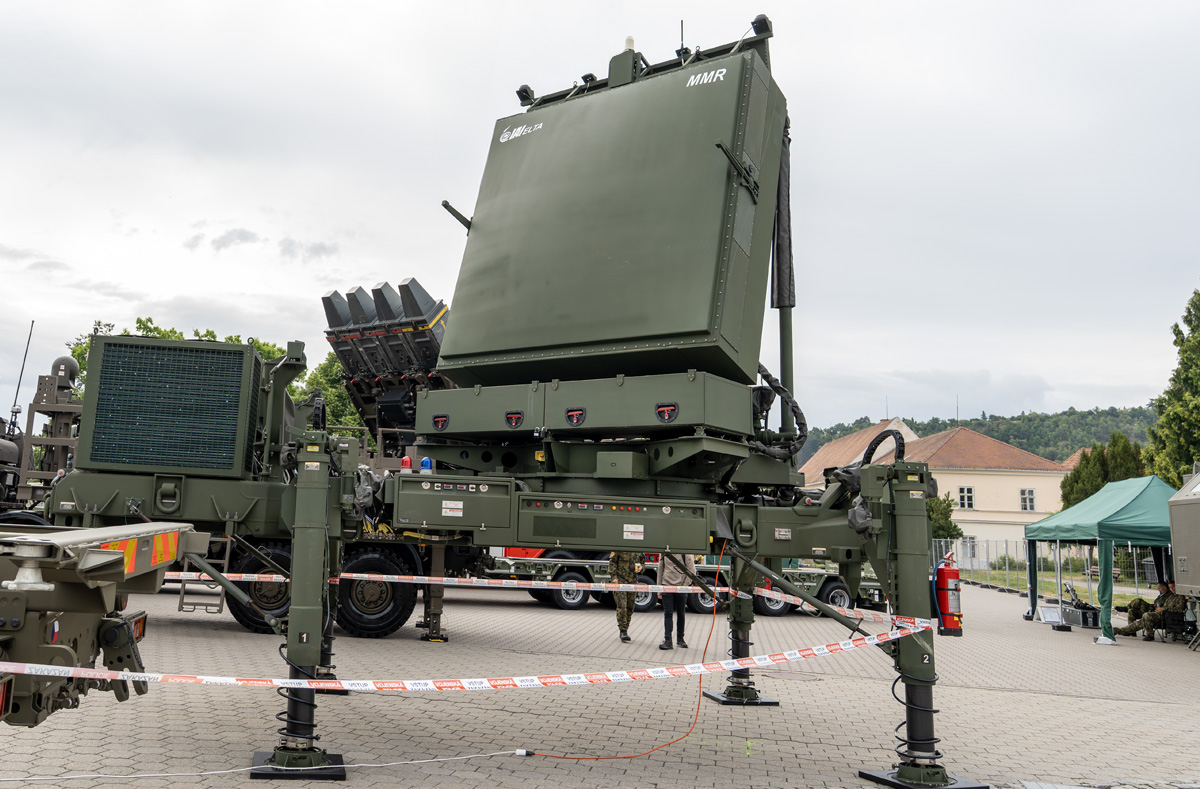
MADR 3D radars are primarily designed to detect and track low-flying targets such as unmanned aerial vehicles, helicopters or missiles, which corresponds to current threats. The radar continuously detects targets, which it processes and evaluates (including Mode 5 IFF – identification friend or foe) and transmits to the local control console. This information is then transmitted via an air data network (internal AČR data network) to specific locations, such as, in this case, the 261st Control and Awareness Centre (CRC), where it is integrated into the national VS Sector system and simultaneously to a remote control console (RRMC), which enables remote control of all radars at once. The information is then used for airspace surveillance, identification of detected objects, coordination with civil air traffic control, and for military air traffic controllers when guiding aircraft on alert to their targets in the event of an ‘Alpha Scramble’ (emergency take-off) or training flights.
MADR radars are designed to cover key military and civilian facilities (e.g. large cities, power plants, military bases) while providing flexibility for mobile deployment. The Czech Republic has an area of 78,866 km², and MADR 3D radars have a detection range of up to 100 km for targets at altitudes of 100–3,000 metres, which theoretically allows coverage of a significant part of the territory when suitably deployed. Five stationary radars are located at strategic military sites, ensuring overlapping coverage of key areas. Three mobile radars are used to supplement and protect strategic targets or for deployment during exercises and crises. For a medium-sized country such as the Czech Republic, eight radars may be sufficient for basic airspace monitoring in peacetime, especially when integrated with other sensors.
In the event of a large-scale conflict or the need for continuous 360-degree coverage, the number of eight radars could be limiting, especially if some radars were taken out of service (e.g. by attack or failure). On the other hand, it should also be noted that the Czech MADR 3D radars are part of NATO's integrated air and missile defence system (NATINAMDS). The Czech Republic does not rely solely on its own radars, but also uses data from allied systems, such as radars in neighbouring countries such as Poland, Germany and Slovakia. This interoperability reduces the need for a larger number of domestic radars, as information is shared in real time. MADR 3D radars have proven their effectiveness in exercises such as the aforementioned Ramstein Guard 2024, confirming their interoperability with NATO standards.

The introduction of MADR radars into the Czech Army's arsenal is a success not only for the army and the supplier, but also for the integrator and subcontractor, Retia, a leading Czech developer and manufacturer of radar technology, among other things, responsible for their implementation in the Czech Army. The company provides support for the installation and integration of radars into certified information systems and manufactures the DTRM and DRM modules necessary for radar production. It also provides logistical support during user training – in this case for members of the 26th Regiment – and during the warranty period. It cooperates with the Military Technical Institute on technical integration and also provides documentation translation, training and 27/7 service. ‘The challenge was to harmonise Israeli technology with Czech requirements, which we managed to do,’ says Jan Mikulecký, CEO of Retia a.s. The project has brought the company extraordinary experience and created dozens of new jobs.
More radars of the same type will be added, again with the support of Retia, which is making full use of its experience from the MADR project in the supply of SPYDER short/medium-range anti-aircraft systems (to the 25th Anti-Aircraft Missile Regiment in Strakonice), which use the same EL/M-2084 radar. The current number of radars reflects a compromise between the budgetary possibilities and operational requirements of a medium-sized country in a relatively stable region, but in the event of an escalation of threats or the need for greater redundancy (to cover the needs in the event of one or more radar failures), a higher number of radars would certainly be an advantage.
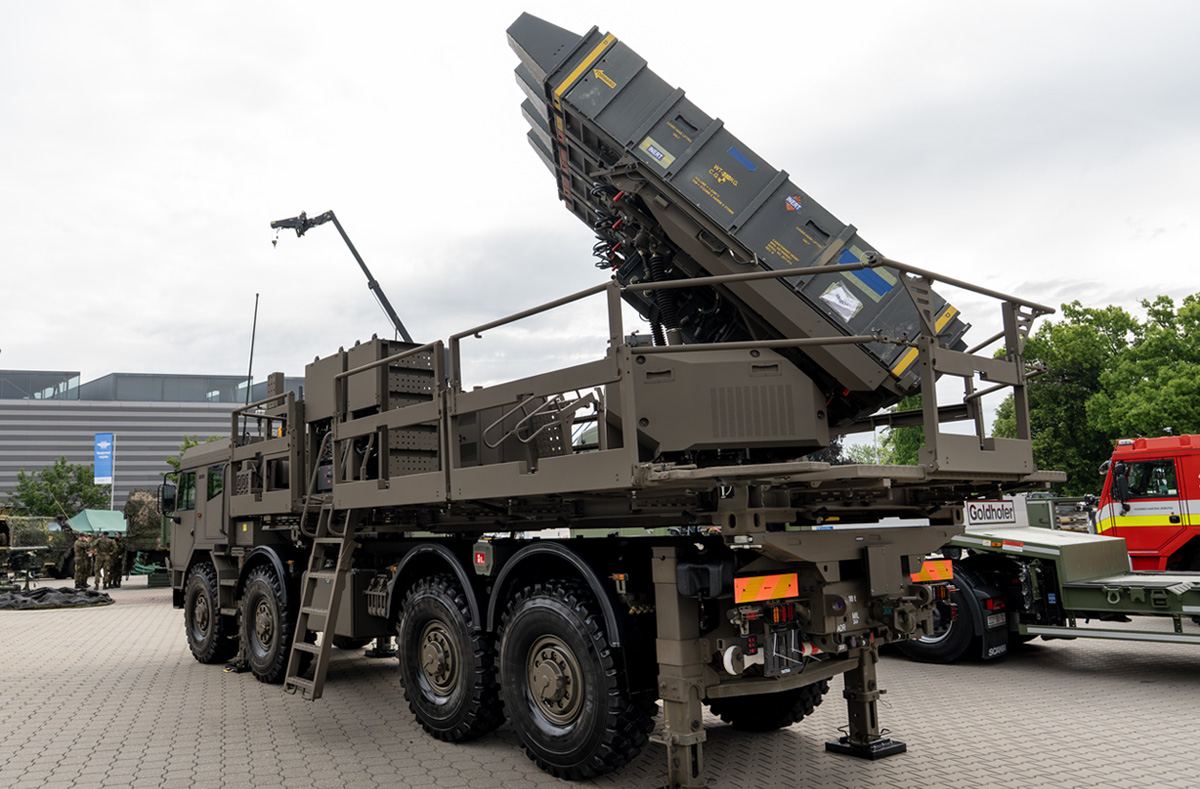
We have already discussed the configuration and tasks of the MADR 3D radars in the 25th and 26th regiments. The main task of the radars will be to provide support for ground-based air defence systems within the brigade task force or to protect objects important for national defence. In both units, the information obtained from the radars can be shared with a unified command and control system or forwarded to other units. The radars intended for the 25th and 26th regiments should be interchangeable, but they differ slightly in their configuration.
The systems intended for the 26th Regiment, which are already in service, are mounted on a Tatra 8x8 vehicle platform, where the power supply unit (RPU) is located in addition to the radar itself. The system also includes mobile local control console boxes (RLCC), which are carried into a tent or building. To speed up the deployment of the system, the army is working on a follow-up project to provide an escort vehicle for the MADR system with a built-in local control console. In the SPYDER system (designed for the 25th Regiment), a radar is mounted on the chassis of a Tatra 8x8 vehicle, and a container with an operator's workstation, including a power supply system in the form of a power generator, is mounted on a second vehicle. The deployment/retraction and mobility of this system are currently superior to those of the radars designed for the 26th Regiment.

In addition to the Czech Republic and Israel, where it is a key component of the Iron Dome and David's Sling systems, the EL/M-2084 radar is also used by Canada, which purchased ten EL/M-2084 radars in the Weapon Locating Radar (WRL) version under the designation AN/MPQ-504 in 2015. These radars serve as artillery radars for detecting and locating sources of enemy fire (e.g. mortars, howitzers) and for airspace reconnaissance. Slovakia placed a significant order in 2021 for a total of 17 EL/M-2084 radars (medium- and short-range MMR variants and ELM-2138M very short-range variants) to replace obsolete Soviet radars. Deliveries are scheduled to take place between 2022 and 2026. In 2020, Hungary ordered 11 EL/M-2084 radars (5+6) for air defence and artillery purposes. Deliveries are being made in cooperation with Rheinmetall Canada, which is responsible for integration and partial production in Hungary. Finland purchased EL/M-2311 radars (derived from EL/M-2084) in 2019, primarily for counter-battery tasks and secondarily for air surveillance. Deliveries began in 2021 after testing in 2018. Outside Europe, they are also used by Singapore, Azerbaijan and India.
In connection with MADR radars, we asked Colonel Zdeněk Patera, commander of the 26th Command, Control and Reconnaissance Regiment, a few questions:
How has the army progressed with the project for an escort vehicle for the MADR system with a built-in control console to facilitate deployment, retraction and improve the overall mobility of the system?
The project is currently running according to plan, and a prototype of the support vehicle should be delivered this year for testing by the army. If these tests are successful, eight such vehicles will be delivered in 2026-2027. The supplier of this support vehicle is VTÚ s.p.
What comparable equipment do neighbouring allied armies use, and does the Czech solution have any clear advantages over them?
For example, Germany, specifically the German company Daimler-Benz Aerospace, has developed the TRMS 3-D LÜR (Taktisches Radar Mobil Such 3-D Luftraum Überwachungs Radar) radar, which serves more or less the same purpose as MADR radars. Slovakia has taken a similar path to the Czech Armed Forces, purchasing Israeli radars. Poland then acquired TRS-15 ‘Odra’ radars, which are medium-range radars with comparable parameters. I see the advantage of the Czech solution in the fact that the ELM radars from the Israeli supplier are deployed in combat and tested almost daily in combat operations as part of Israel's comprehensive airspace defence. This means that modern knowledge is implemented and detection capabilities are improved, which can also be beneficial for the Czech Army.
Is eight radars optimal for the Czech Republic's needs?
As has been said many times, this number may be sufficient for peaceful deployment and fulfilment of the Czech Armed Forces' commitments to the Alliance in combination with stationary FADR radars. In my opinion, however, it is crucial to ask whether the army has all the capabilities to ensure airspace surveillance and detection of known threats, such as ballistic missiles, cruise missiles, etc. And here, the army declares in the KVAČR that it must supplement these capabilities.
Can the RBS-70 NG portable missile launchers also use data from MADR 3D radars?
MADR radars are not directly designed for these devices. However, in general terms, it can be said that they use the processed data from these radars as a recognised image of the air situation (known as RAP or Recognised Air Picture), which is distributed from the 261st Control and Awareness Centre (CRC). The information distributed in this way is used by RBS-70 NG devices for overview and warning purposes. Otherwise, the RBS-70 NG uses its own ReVISOR radar, which is a Czech short-range radar system.
How is direct air and drone defence currently ensured, or how do you think it should be ensured, for radars, which are one of the enemy's priority targets?
The term air and drone defence covers a wide range of technologies and strategies aimed at protecting both airspace and the assets themselves. At the moment, the army is evaluating its experience from the war in Ukraine and working on how to implement measures as quickly and effectively as possible, because this anti-drone defence includes both electronic jamming and kinetic weapons or systems. In general, another significant threat to active radars is anti-radar missiles, which is why the military is combining active and passive radar systems to ensure maximum sustainability of active radars on the modern battlefield.



